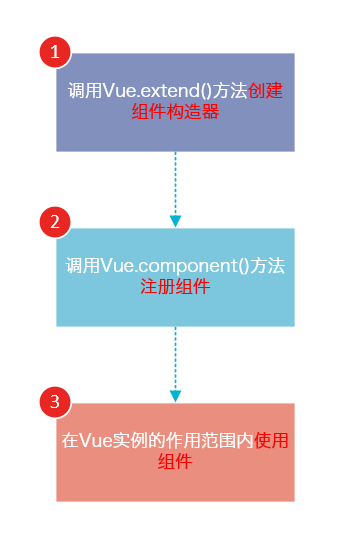- 创建组件:创建单页面应用需要渲染的组件
- 创建路由:创建VueRouter实例
- 映射路由:调用VueRouter实例的map方法
- 启动路由:调用VueRouter实例的start方法
var Home = Vue.extend({
template: '<div><h1>Home</h1><p>{{msg}}</p></div>',
data: function() {
return {
msg: 'Hello, vue router!'
}
}
})
var About = Vue.extend({
template: '<div><h1>About</h1><p>This is the tutorial about vue-router.</p></div>'
})
var router = new VueRouter()
router.map({
'/home': { component: Home },
'/about': { component: About }
})
div class="list-group">
<a class="list-group-item" v-link="{ path: '/home'}">Home</a>
<a class="list-group-item" v-link="{ path: '/about'}">About</a>
</div>
<router-view></router-view>
在页面上使用<router-view></router-view>标签,它用于渲染匹配的组件。
var App = Vue.extend({})
router.start(App, '#app')
Vue.js的组件的使用有3个步骤:创建组件构造器、注册组件和使用组件。

<!DOCTYPE html>
<html>
<body>
<div id="app">
<!-- 3. #app是Vue实例挂载的元素,应该在挂载元素范围内使用组件-->
<my-component></my-component>
</div>
</body>
<script src="js/vue.js"></script>
<script>
// 1.创建一个组件构造器
var myComponent = Vue.extend({
template: '<div>This is my first component!</div>'
})
// 2.注册组件,并指定组件的标签,组件的HTML标签为<my-component>
Vue.component('my-component', myComponent)
new Vue({
el: '#app'
});
</script>
</html>